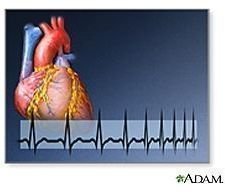Life After a Heart Attack and Heart Attack Prevention
Life After a Heart Attack
If you are one of the 1.1 million people (per year) in the United States that suffered a heart attack and was fortunate to survive (nearly half do not make it), it is possible to continue living a full and active life.
The first two days after a heart attack are the most critical. Rest is important so your heart has an opportunity to heal. Your activity level will start out slow and, if there are no complications, you should be discharged from the hospital in 5-7 days.
The amount of activity you can do depends on the condition of your heart. As time passes, the damaged tissue of the heart is replaced by scar tissue. Most people can return to their normal routines in 6-12 weeks. Others may take longer or may have to limit their activities for the rest of their lives.
Cardiac rehabilitation is recommended after having a heart attack so appropriate limitations can be set. An exercise specialist will work with you to develop an exercise plan that is best for your needs.
Most people are able to go back to work in 1-3 months. You may have to start out doing less (probably work part time) for a short period or, if your job involves strenuous work, you may have to wait longer before returning or look for a less stressful job.
Depending on state laws, you should be able to start driving after 4 weeks. Stressful driving situations, such as driving in a big city or during rush hour, and long journeys should be avoided until the time is right.
Normally, you can resume sexual activity after 3-4 weeks. As with other activities, you will want to work your way back to your normal pattern slowly.
Preventing Another Attack
One in four people become depressed after a heart attack. Depression can affect recovery, require rehospitalization, and also be fatal. If you are having signs of depression, seek help.
If you smoke or chew tobacco, quit. Tobacco constricts coronary arteries and decreases blood flow to the heart muscles.
Exercise boosts energy, strengthens the heart, and helps in weight loss. It may also help lower blood pressure and cholesterol levels. Walking, cycling, and swimming are some of the best types of exercise and should be performed (when your exercise plan allows) at least 3 times a week for 30 minutes each day.
Eat nutritiously. Include fish, fresh fruits and vegetables, and other healthy foods and beverages in your diet. Limit alcohol and salt intake.
Prevention after a heart attack should be taken seriously. About 10% of people who have a heart attack will experience another one within a year. Every year after that, the risk drops about 3%.
Photo Credit
Image courtesy of the National Library of Medicine (NLM)
Disclaimer
Please read this disclaimer regarding the information contained within this article.
